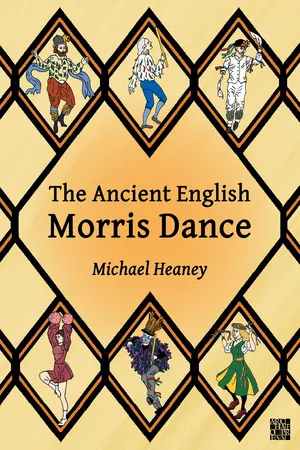
- 450 pages
- English
- ePUB (mobile friendly)
- Available on iOS & Android
About this book
The idea that morris dancing captures the essence of ancient Englishness, inherently carefree and merry, has been present for over four hundred years. The Ancient English Morris Dance traces the history of those attitudes, from the dance''s introduction to England in the fifteenth century, through the contention of the Reformation and Civil War, during which morris dancing and maypoles became potent symbols of the older ways of living. Thereafter it developed and diversified, neglected and disdained, until antiquaries began to take an interest in its history, leading to its re-invention as emblematic of Victorian concepts of Merrie England in the nineteenth century. The quest for authentic understanding of what that meant led to its revival at the beginning of the twentieth century, but that was predicated on the perception of it as part of England''s declining rural past, to the neglect of the one area (the industrial north-west) where it continued to flourish. The revival led in turn to its further evolution into the multitude of forms and styles in which it may be encountered today.
Frequently asked questions
- Essential is ideal for learners and professionals who enjoy exploring a wide range of subjects. Access the Essential Library with 800,000+ trusted titles and best-sellers across business, personal growth, and the humanities. Includes unlimited reading time and Standard Read Aloud voice.
- Complete: Perfect for advanced learners and researchers needing full, unrestricted access. Unlock 1.4M+ books across hundreds of subjects, including academic and specialized titles. The Complete Plan also includes advanced features like Premium Read Aloud and Research Assistant.
Please note we cannot support devices running on iOS 13 and Android 7 or earlier. Learn more about using the app.
Information
Table of contents
- Cover
- Title Page
- Copyright
- Contents
- List of Figures
- Preface
- Introduction
- PART I: EMERGENCE (1448-1569)
- PART II: CONTENTION (1570-1659)
- PART III: FRAGMENTATION (1660-1800)
- PART IV: RE-EMERGENCE (1801-1899)
- PART V: REVIVAL (1899 – PRESENT)
- Bibliography
- Index